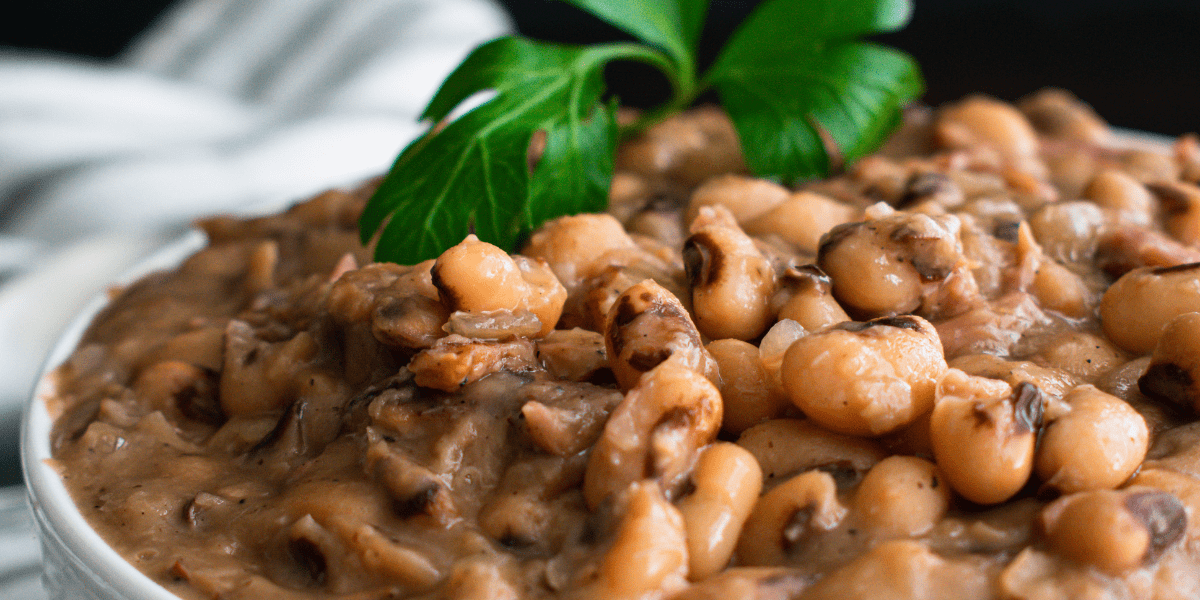
Eating black-eyed peas to start the New Year is a bit like tossing a coin into a wishing well – diners are eating in hopes of a better year ahead.
There is a tangible excitement for the new year. Out with the old, in with the new. This electricity is felt in how the world seems to slow down for that one week between Christmas and New Year’s Eve, creating some breathing room before we wake up on January 1, 2024, to attack another year.
It is time for that time-honored black-eyed peas and cabbage tradition to usher in good luck and prosperity for the upcoming year.
When you pass the produce aisle, you’ll catch the earliest glimpse of that readiness to bid farewell to 2023. The cabbage is stacked up front, with packs of dried black-eyed peas towering to one side and cans of black-eyed peas to the other. Hamhocks go on sale so that you will add that richness to your dish, and your family may even start arguing over the best way to eat those peas.
The basics of good black-eyed peas
The thing about black-eyed peas, especially if you’ve never cooked them fresh, is that it can seem harder than it is. “They’re just so easy, add a little salt and oil to the water, pour them in the pot, and there ya go,” said Steve Page, former owner of Fannin Mart Restaurant in Flowood, Mississippi.
Page said he uses his long-tested and long-tasted family recipe to make the perfect peas at the restaurant. “I use the same Attala County recipes from my mom and grandma. I’ve never changed them,” said Page.
Page’s mom had a saying that went along with her peas. “A little sugar makes everything better,” said Page. “So I add just a pinch of sugar. And if I’m cooking at home, I make sure to add pork fat, too.”
Cooking fresh or dried black-eyed peas really can be simple. You can either do a quick soak, bring the peas to a boil for two to three minutes, turn off the heat, and let them sit for an hour, You can eve let them soak overnight before cooking. This helps with digestion and saves you from gas pains later.
Of course, canned peas are fine, too, and you get to skip the prep.
The history and mystery of the black-eyed pea tradition
Where precisely this delicious tradition was born isn’t documented, though there are a few widely accepted theories. The first is tied to the Civil War era of the South, when Union soldiers would ditch the “undesirable” food supplies, with black-eyed peas being among those left behind. In the wake of the war, the Southerners who were left would take these tossed-aside peas and turn them into their main nutrient-packed protein source. It was then that eating black-eyed peas became a bit like tossing a coin into a wishing well-–the diners were eating in hopes of a better year ahead.
Another theory suggests that the custom didn’t start in the South but was brought to the South by enslaved West Africans who had always embraced black-eyed peas as a symbol of prosperity. After a while, the dish was tossed into the melting pot of culture that is the American South.

There’s another cultural way to serve delectable black-eyed peas. Hoppin’ John, a pork, rice, and black-eyed pea dish, is widely accepted across the South and around the country as a tradition on the New Year’s Day table. With this African, Caribbean, and South American-inspired dish, each ingredient in Hoppin’ John is a symbol. The peas bring good luck and prosperity; the rice represents wealth and abundance, and the pork ushers in progress (and brings rich flavor) to the year ahead. Hoppin’ John is a dish seen more in the South, especially around New Orleans– with the “holy trinity” of onion, celery, and bell pepper flavoring the dish, along with thyme, bay leaves, and black pepper.
Other twists to tradition
Cabbage or greens are usually served alongside Hoppin’ John or black-eyed peas—but what if you’re serving someone a plate and they turn their nose up at anything green? Take the traditional and add your twist.
“To me, cabbage and greens both have a slimy texture and a powerful, just rank smell,” said David Warren. “Instead, my wife makes kale that she crisped up in the oven or serves a kale and spinach salad.”
For some, black-eyed peas are something that makes the stomach turn. If you can’t get over them, there’s a quite delectable way to try them— hidden in chocolate cake! Check out this recipe from Bittersweet Blog about Lucky (and healthy) Chocolate Cake. Yes, it’s a thing. A good thing. Black-eyed peas, chocolate, and silken tofu make this cake high in protein and low in sugar, so you can have your healthy chocolate cake and eat your lucky and hidden peas, too!
Maybe you’re a foodie and want to try something new. Here’s a recipe for black-eyed pea hummus from Southern Living Magazine:
Ingredients
- 2 garlic cloves
- 2 (16-oz.) cans of black-eyed peas, drained and rinsed
- 6 tablespoons extra-virgin olive oil
- 3 tablespoons tahini
- 2 tablespoons fresh lemon juice
- 1 teaspoon smoked paprika
- 3/4 teaspoon kosher salt
- 1/2 teaspoon black pepper
- Pita chips
- Lemon zest
Directions
Process garlic cloves in a food processor until finely chopped. Add black-eyed peas, drained and rinsed; olive oil; tahini; lemon juice; paprika; kosher salt; and black pepper. Process until smooth. Spoon into a bowl; top with two tablespoons extra-virgin olive oil and 1/4 teaspoon smoked paprika. Top with lemon zest, if desired. Serve with pita chips.











